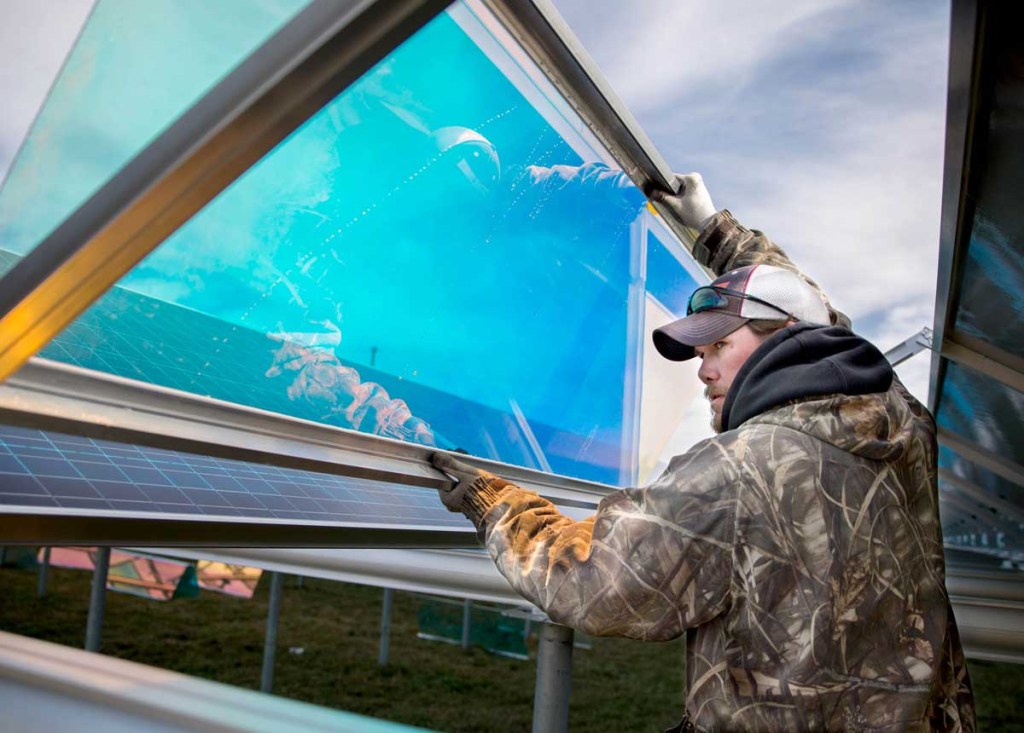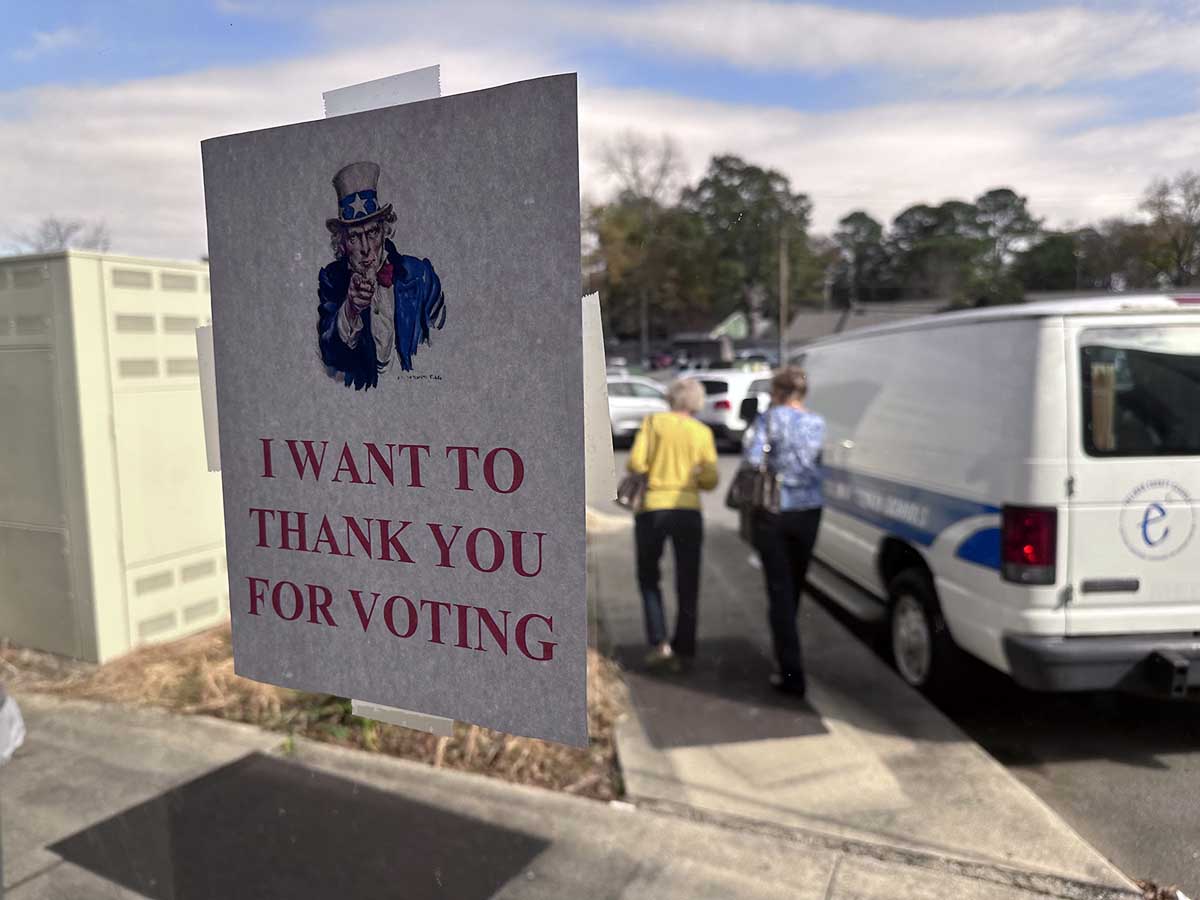Soybeans to solar: Energy boom is boon for landowners
Published 3:30 pm Tuesday, February 23, 2016

- Nathan Klossner, an electric company worker, installs reflective glass that helps block wind and reflect light into the newly installed solar panels near the POET ethanol plant south of Lake Crystal. The South Central Electric Association is erecting the panels and allowing its members to subscribe to them. It's one of many solar projects projected to come to the Mankato area in 2016. Photo by Trevor Cokley
MANKATO, Minn. — When John Frey of Mankato received an inquiry about putting a solar array on his land, he didn’t need to be persuaded on the merits.
Renewable energy was already his sole focus after retiring as a dean at Minnesota State University. Solar power, he said, is a virtual requirement if we’re to wean ourselves off fossil fuels.
Trending
When 40 acres of solar panels go up on his rural land, perhaps this May, he’ll be looking at it as part of a global solution to climate change.
That’s a view shared by the manager of the project, Nathan Rogers of Ecoplexus.
“Every kilowatt hour produced by solar is one not produced by nuclear or fossil fuels,” he said. An installation of this size in Minnesota powers about 500 homes.
Even as it’s changing the world, solar power is changing Minnesota. Responding to tax incentives and new mandates, the state’s largest utility, Xcel Energy, is making an unprecedented investment in solar.
In south-central Minnesota, landowners are seeing new opportunities and local governments are figuring out how to accommodate fields of panels. A typical 40-acre project represents more than 30 football fields’ worth of arrays.
Soybeans to solar
Trending
Finding a suitable site is among the first steps of starting a solar array. Rogers said developers look for flat, dry land, preferably close to a power substation.
Power lines connecting a solar array to a substation typically have to be upgraded, so a shorter distance between the two means a smaller upgrading cost.
Dean Rengstorf, whose family owns farm land south of Nicollet, Minnesota, figured that’s how solar developer SunEdison found him.
“They probably draw a circle around substations and start contacting potential renters who might be interested in this kind of thing,” he said. “It doesn’t hurt to listen, so we did.”
The family would eventually sign a 25-year lease with SunEdison with an option to extend it for five years afterward.
Even so, “We had a million questions,” he said.
The family liked the idea of the solar array having a wildlife benefit, too. Though tall grasses can’t go under the panels, they can go around and among them.
“Once the footprint is done and the panels are done, they said they’d work with us on getting tallgrass for pheasants and milkweed for monarchs,” Rengstorf said.
But they also wanted to know how their property would be changed over that time and what it would take to bring soybeans back when the panels are a memory.
“That’s one of the concerns we had as a family,” he said. “If the solar thing doesn’t work out after five years, 10 years and they have to decommission, we have to put it into tillable acres.”
The posts to which the panels are attached are simply driven into the ground without concrete and can be removed. The panels and equipment have enough salvage value that companies will be incentivized to remove them, he said. And the county requires renewable energy companies to pay for cleanup once a solar farm stops producing power.
The power lines that run to the solar arrays are buried 3 or 4 feet down. They wouldn’t be removed after the panels are gone, but are buried deep enough that they wouldn’t get in the way of farming equipment.
Though plenty of projects are making it through counties’ regulatory process, the bigger hurdle lies with Xcel Energy’s approval to connect to the grid, called an interconnection agreement. But Rengstorf said the solar developer plans on starting construction in May.
“SunEdison told us this is No. 1 in the queue,” he said.
Like other solar gardens in Xcel territory, SunEdison will be able to sell memberships in this project to Xcel customers in its home county, Nicollet, as well as any bordering counties.
Rengstorf said SunEdison has told him they intend to market to larger corporations.
“Green energy is green energy no matter who you sell it to,” he said. “Our family was on board with that whole concept.”
Frey said his lease agreement with Ecoplexus pays him a fixed rate, but the company’s revenue will depend on changing energy prices.
“From their perspective, I’m sure they’re betting solar energy is going to be more valuable at the end of this period than at the beginning,” he said. “That’s what I’m assuming they’re betting on.”
The big picture
Even with the solar boom, the sun will only supply a tiny fraction of the state’s energy needs. And solar power, Frey said, remains about twice as expensive as electricity from coal.
Still, energy needs are likely to keep growing as the population rises — which Frey calls “the big elephant in the room” — and cheap coal power may supply less of it.
“I think in time (solar) will be an important energy segment for the country.”
Linehan writes for the Mankato, Minnesota Free-Press.





